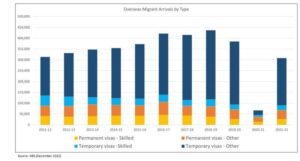One year ago, UDIA National called for a robust population plan to sustain Australia’s economic recovery. Net Overseas Migration (NOM) historically accounts for about 60% of the population growth needed to sustain a vibrant Australian economy.
In October, UDIA welcomed the initiative from the Federal Government’s Jobs & Skills Summit to increase in the permanent Migration Program ceiling to 195,000 in 2022-23 to help ease widespread, critical workforce shortages across all industries, particularly in construction.
“The Federal Government has made significant inroads in processing the backlog of skilled worker visa applications which is evidenced in today’s announcement by the ABS which shows that Net Overseas Migration has recovered to 170,000 in 2021-22,” said Maxwell Shifman, UDIA National President.
The pandemic-caused immigration freeze resulted in a significant lack of skilled workers, delayed projects and greatly reduced productivity – so whilst trending in the right direction, we remain 39% down compared with 2019 in terms of total visa holders, 18% down on the long run average of permanent skilled visa, and 29% down on temporary visa holders:

Overseas Migration by type (aggregated) with Skilled Visa holders recovering significantly in FY22, however Permanent Skilled migrants are still 18% below the long run average, and Temporary Skilled migrants 29% below the long run average.
UDIA National’s Policy Platform, “Plan for Prosperity”, outlined several core solutions:
- Double Net Overseas Migration – until we close the COVID gap.
- Prioritise preferred migrants – foreign students & skilled migrants to overcome worker shortages.
- Prioritise visas across in-demand regions and for specific skills – with creation of skilled rural and remote visas with a 4-year term & pathways to citizenship.
- Increasingly use Labour agreements between Australian employers and Government to enable skilled overseas workers to work in skilled occupations for five years as:
- a temporary skill shortage (TSS) visa subclass 482; or
- a permanent residence pathway under skilled employer sponsored regional (SESR) (Provisional) visa (subclass 494); or
- employer nomination scheme visa (subclass 186).
“Population growth is integral to the housing and construction sector’s strength as a pillar of economic activity. Australia needs an ongoing settlement strategy to address skilled labour shortages, restore our economic growth and close the gaps caused by the pandemic. The economy will continue to struggle if bold migration targets are not achieved, particularly with broader headwinds. We are hopeful of seeing more positive migration data from the next ABS release in early 2023,” said Mr Shifman.
–ends–
Media Enquiries: Deanna Lane -media@udia.com.au

